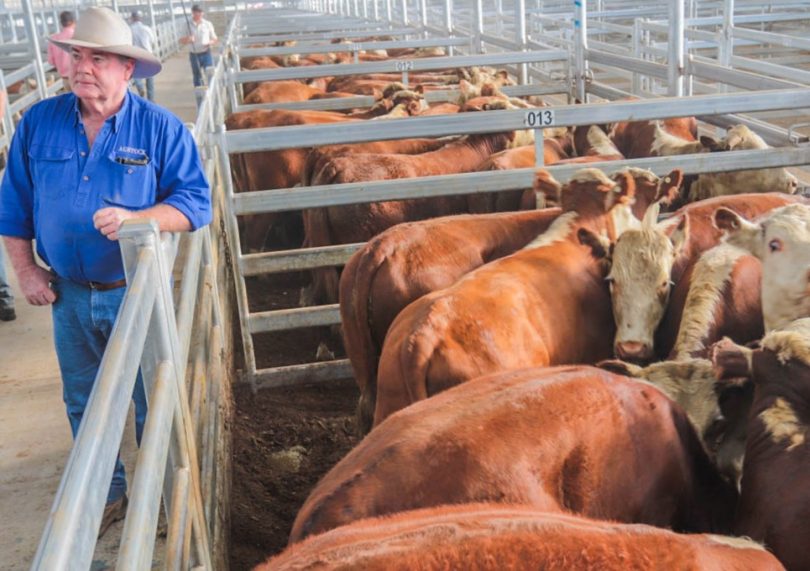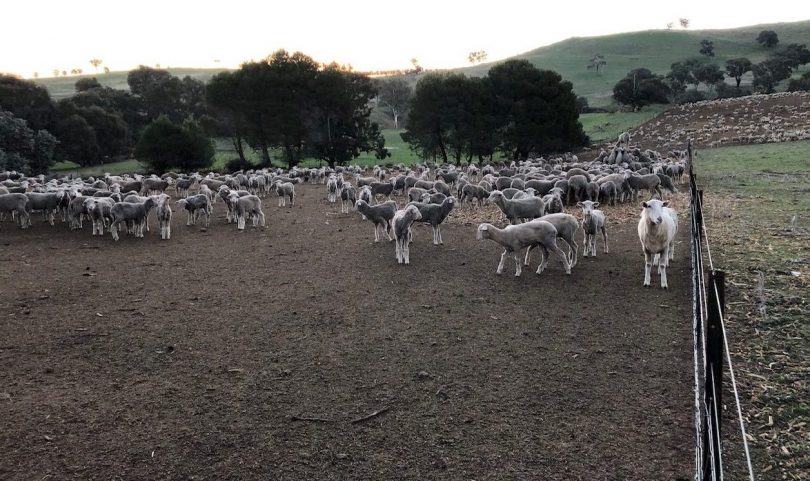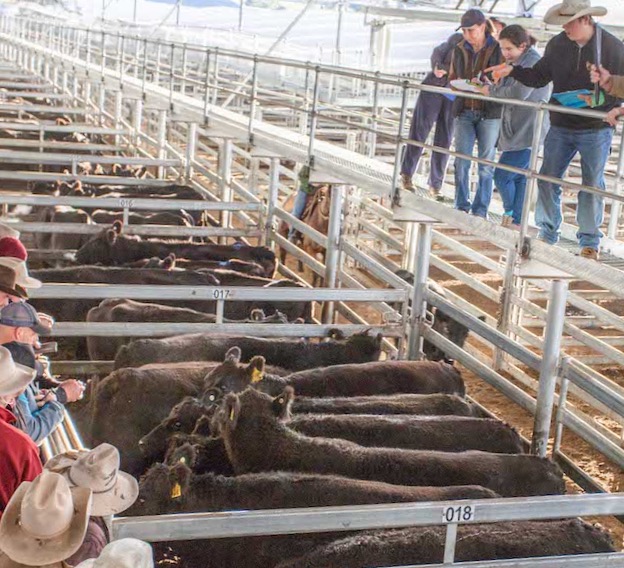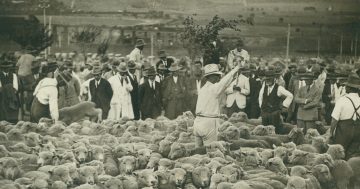
Agstock’s John Sheahan near pens of cattle. Photo: South East Livestock Exchange, Yass.
In 42 years as a butcher, Peter Lindbeck has never seen lamb prices so high due to the unrelenting drought, leaving no room for profit margins.
As well as running Lindbeck’s Butchery in Queanbeyan, Mr Lindbeck assesses apprentice butchers throughout the Territory for the Canberra Institute of Technology, which allows him to see inside numerous other butcher shops.
“The amount of space they allocate for lamb is about a third of what it used to be,” he said. Chicken is the most noticeable substitute for the traditional lamb.
“Everyone is horrified when you charge them $60 for a leg of lamb,” he said.
Mr Lindbeck says it is nearly impossible to buy quality grass-fed stock, except for some good lambs from Victoria.
“The price is absurd. The farmers would be enjoying it if they have any stock, but it has certainly made it hard at this end to sell it,” he said.
He does not expect high prices will ever drop again, due to the drought and increased exports of lamb and beef.
Pork prices were rising too, with African swine flu wiping out millions of pigs overseas and causing a spike in demand and prices that will have a flow-on effect in Australia.
“Pork prices will go mad, lamb prices have already gone mad and the price of beef has been strong now for six years,” Mr Lindbeck said.
The drought may be impacting the cost of food but at least high lamb and mutton prices are helping farmers across the drought-declared Southern Tablelands and Monaro pay for feed for their remaining livestock.
In some parts of the Monaro, de-stocking of cattle has been underway for months as water has become scarcer.
In good seasons, farmers expect water almost to be running out of the ground to get them over the harsh summer months but the fear creeping across the Monaro plains is that the rain they need will not fall during the crucial spring period.
In Yass, Butt Livestock and Property director Phill Butt says most farmers are hand-feeding. “If they are not, they are not far off it,” he said.

Lambs at Binalong, near Yass. Photo: South East Local Land Services.
John Sheahan of Agstock says mutton and lamb are as dear as he’s ever seen at sheep sales, with lamb making $6 to $8 a kilo, and mutton $5 to $6 a kilo. “For a drought, it has been a great opportunity to get out [of farming] if they have to. Wool prices have been very good as well,” Mr Sheahan said.
He said cattle weighing 320 kilos or undersold for re-stocking were struggling to make a good price, because of the lack of feed.
Mr Sheahan said patches of grass remained around Yass, while the Crookwell district was having a good year.
“Once you go back from Bowning to Jugiong it dies away. Gundagai is bloody terrible. Brungle, Tumut and Batlow, Tumbarumba are very good,” he said.
“The circle of good feed is getting smaller. A lot of stock are going. People with sheep and cattle are getting rid of the cattle. If you feed a cow for 12 months it will cost you $1000, you have to do a few sums.
“Where blokes come undone big time, they will buy feed, start feeding, then cave in, get sick of it because it’s too expensive. Then they sell up having spent a lot of money on fodder, the cattle are worthless, so it is a double hit – that happens more than people think.”

Bidding for cattle at South East Livestock Exchange, Yass. Photo: South East Livestock Exchange.
At Cooma, Boller & Company stock and station agency director Graeme ‘Chippy’ Boller said cattle were the first thing to go when water was in short supply.
“A big producer out Jerangle way sold 140-150 cows and calves at a recent sale,” he said. “He had water issues; they had to go.”
Mr Boller can’t remember when heavy rain last fell. He said in late winter feed was $400-$500 a tonne and eased to about $300 a tonne for most of the cereal hay. Lucerne hay was dearer.
NSW Farmers Cooma branch chair Craig Mitchell is maintaining feeding through the drought, spending $1000 a day for sheep and cattle east of Cooma and beginning to buy fodder for his livestock at Bombala.
“We’ve made our decision and we’re getting on with it,” Mr Mitchell said. “The difference between this drought and previous ones is the good stock prices. Agriculture has been fantastic over the last five to 10 years. The whole protein market has been good. Lamb prices have been good, wethers, wool prices, too, interest rates have been low.”













